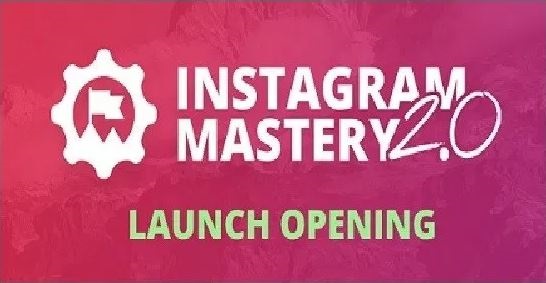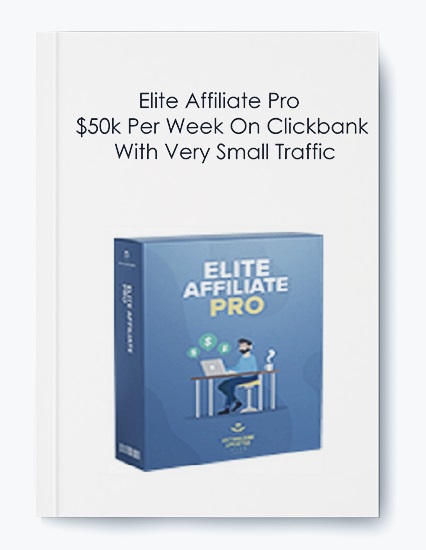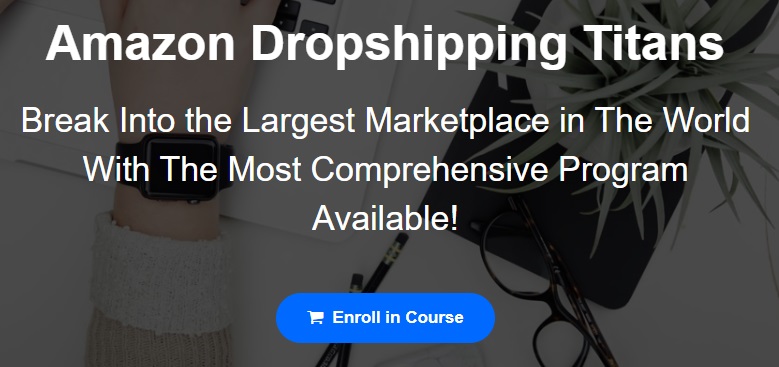Paywall Profits – James Foster
$199.00 $9.00
- Delivery: You Will Receive A Receipt With Download Link Through Email.
- If you need more proof ofcourse, feel free to chat with me!

Description
Paywall Profits represents a strategic paradigm shift in digital marketing, moving beyond traditional sales funnels to harness innate human curiosity for immediate and sustainable income generation.
Paywall Profits

The Paywall Profits strategy, also known as the Paywall Mentality, is a powerful framework for transforming audience engagement into a consistent revenue stream and fostering organic growth. Developed by Travis Sago, this methodology deviates significantly from conventional marketing approaches by directly challenging the notion that extensive “know, like, trust” cultivation is a prerequisite for sales. Instead, it leverages a single, compelling email or post to ignite an audience’s curiosity and self-interest, driving them to purchase access to withheld, valuable information. This approach is claimed to be inherently more effective than a straightforward sales pitch, as it taps into a psychological trigger that compels action.
The core principle revolves around creating an intense desire to access an answer or solution, positioning the paywall not as a barrier, but as the gateway to immediate gratification. The strategic deployment of this mentality aims for quick and effective conversion, bypassing lengthy promotional campaigns. It’s presented as a learnable skill, emphasizing psychological triggers over sophisticated writing prowess, making it accessible even to those without advanced literary abilities. The ultimate goal is to generate both immediate and recurring income while simultaneously creating self-multiplying assets that organically expand the audience base.
The Mechanism of Curiosity and Self-Interest
The primary mechanism of the Paywall Profits strategy capitalizes on the audience’s inherent curiosity and self-interest, turning these psychological drivers into powerful catalysts for conversion. By teasing a valuable answer or solution, the strategy makes readers feel an undeniable compulsion to discover what lies behind the payment barrier. This dynamic is likened to the intense engagement viewers experienced with television shows like “LOST,” where the desire to uncover the ending immediately was so profound that many would have willingly paid for instant access. The brilliance here lies in understanding that human nature craves resolution and fears missing out on crucial information, especially when it pertains to their own betterment or understanding.
This approach directly counter-argues long-held marketing aphorisms, particularly the idea that one can lead a person to a sale message but not entice them to buy. The Paywall Mentality asserts that this is “total BS,” postulating that a customer’s desire can be significantly amplified to the point of purchase by executing one specific action that dramatically ratchets up their curiosity. This isn’t about manipulation in a negative sense, but rather about skillfully orchestrating an information gap that the audience is eager to fill, and then providing the means to fill it. The perceived value of the information behind the paywall must be sufficiently high to justify the immediate payment, creating a mental equation where the cost is negligible compared to the perceived benefit of knowing.
The simplicity and accessibility of this method are key to its broad applicability. It doesn’t demand sophisticated writing skills or flowery language. Its effectiveness is rooted in understanding and activating fundamental psychological triggers, rather than relying on literary prowess. This democratizes the ability to generate significant Paywall Profits, allowing individuals to leverage innate human curiosity without needing to be master wordsmiths. The focus remains squarely on the psychological impact of withheld information and the subsequent desire to access it, proving that sometimes, less “selling” and more “teasing” leads to greater success.
Recurring Income Generation and Compounding Effect
A cornerstone benefit of implementing the Paywall Profits strategy is its remarkable ability to generate recurring sales almost immediately, establishing a robust and predictable income stream. This model is meticulously designed to create a continuous flow of payments that not only accumulate over time but also exhibit a powerful compounding effect, leading to substantial cumulative income. Travis Sago himself is famously quoted emphasizing this point, stating, “I’ve sold more Recurring offers with a Paywall or Paywall Mentality than anything else! Paywalls work better than a pitch!” This direct assertion highlights the superior efficacy of the paywall approach over traditional sales pitches in securing repeat business.
The compounding effect inherent in this strategy is particularly compelling for anyone seeking sustained financial growth. The source illustrates this potential with a clear example: even the seemingly modest achievement of adding just one recurring payment per day can rapidly escalate into significant monthly revenue. In the first month alone, this consistent acquisition translates to 30 new monthly payments. By the third month, this figure can soar to as many as 90 recurring payments, demonstrating how small, consistent efforts in attracting subscribers to paywalled content can quickly build a formidable and ever-growing income base.
This model fundamentally shifts the perspective from one-off transactions to building a loyal subscriber base that provides ongoing value. The recurring nature of these payments offers financial stability and predictability, allowing creators and businesses to plan and invest with greater confidence. It transforms the act of content creation from a sporadic income generator into a strategic engine for continuous Paywall Profits. The beauty lies in its scalability; as the audience grows and the paywall content proves its value, the stream of recurring payments naturally expands, reinforcing the long-term viability and attractiveness of this strategic framework for anyone looking to monetize their expertise or information effectively.
Audience Multiplication and Enhanced Relationships
Beyond direct revenue generation, a crucial and arguably more innovative aspect of the Paywall Profits strategy is its capacity for audience multiplication, essentially transforming audience assets into self-multiplying entities. This strategy is uniquely designed to entice both free subscribers and existing paying members to willingly and even happily participate in expanding the audience base for the asset owner. This organic growth mechanism is a stark contrast to traditional marketing, which often relies on costly advertising or complex referral programs. Here, the very act of engaging with the paywalled content, and the perceived value derived from it, inspires individuals to share and advocate, becoming unwitting — or perhaps enthusiastic — evangelists for the content creator.
What makes this phenomenon particularly intriguing is the claim that this sales methodology actually improves the seller’s relationship with their audience, a counterintuitive assertion given that traditional paywalls can sometimes be perceived negatively. The strategy posits that even non-buyers develop a positive sentiment towards the seller, reportedly loving them even if they don’t purchase access. This suggests that the allure of the withheld information, the anticipation it generates, and the perceived generosity of providing a compelling “tease” creates a beneficial psychological connection, fostering goodwill regardless of conversion. It implies that the seller is seen as a source of valuable insights, even if those insights are temporarily behind a barrier.
For those who do cross the paywall, the relationship is said to elevate even further. Customers who purchase access are claimed to “ADORE the seller even more for the experience.” This adoration stems from the satisfaction of having their curiosity fulfilled and gaining access to the promised valuable information or solution. The act of purchasing becomes an affirmation of their self-interest and a rewarding experience, solidifying a deeper connection with the seller. This enhanced relationship not only encourages continued patronage but also reinforces the self-multiplying aspect of the strategy, as these satisfied buyers are more likely to share their positive experiences and recommend the paywalled content to others, thereby perpetuating the cycle of audience growth and Paywall Profits.
James Foster
The effectiveness of the Paywall Mentality is not merely theoretical; it is substantiated by concrete examples and case studies, demonstrating its practical application and significant impact on revenue and audience growth. One of the most compelling pieces of evidence comes from James Foster, who, after acquiring a newsletter, implemented this strategy with remarkable success. His application of the Paywall Mentality directly led to a doubling of the newsletter’s income within a few short months, showcasing the rapid and potent revenue-generating capabilities of this approach.
This example highlights how the strategy can be applied to existing assets to unlock dormant potential and dramatically accelerate financial performance. Beyond individual success stories like Foster’s, the broader impact of the Paywall Mentality is evident in its consistent use by Travis Sago himself, who has leveraged it for years to drive his own and affiliate recurring sales, convert free newsletter subscribers into paying members, and stimulate overall audience growth, proving its versatility across various monetization goals.
Foster’s Doubling of Newsletter Income
James Foster provides a compelling real-world testament to the immediate and significant impact of the Paywall Mentality. Upon acquiring an existing newsletter, Foster faced the challenge of not just maintaining its audience but substantially increasing its financial output. Instead of resorting to conventional, often drawn-out marketing campaigns or extensive trust-building exercises, he chose to deploy the Paywall Profits strategy. This involved meticulously identifying key information or insights that his newsletter audience would find highly valuable and then strategically placing access to this content behind a paywall, teasing its existence in a way that amplified curiosity and self-interest.
The results of Foster’s implementation were nothing short of impressive: he successfully doubled the newsletter’s income within a mere few months. This rapid increase in revenue speaks volumes about the efficiency and power of the Paywall Mentality. It underscores the strategy’s ability to quickly convert a passive or moderately engaged audience into paying customers by tapping into their inherent desire for exclusive, high-value information. Foster’s success demonstrates that the approach can revitalize existing platforms and unlock substantial monetization opportunities without necessarily requiring a complete overhaul of the content or a massive influx of new subscribers.
His experience serves as a powerful case study for others considering this approach, illustrating how a focused application of psychological triggers can yield dramatic financial benefits. It highlights that success with Paywall Profits isn’t about being a marketing guru with limitless resources, but rather about understanding human psychology and strategically applying the principles of curiosity and self-interest to drive immediate action. Foster’s achievement reinforces the idea that the “paywall works better than a pitch” when the information withheld is genuinely coveted by the target audience.
The Case Study of 66% Audience Growth
Beyond financial metrics, the Paywall Profits strategy also demonstrates a remarkable capacity for audience expansion, as evidenced by a compelling, albeit unnamed, case study. This particular instance involved a single post crafted using the principles of the Paywall Mentality, which remarkably led to a 66% growth in the audience. This statistic is profoundly significant, as it illustrates the self-multiplying asset aspect of the strategy, where the very act of teasing valuable, paywalled content stimulates organic growth rather than solely relying on direct advertising or referral incentives.
This case study strongly supports the claim that the Paywall Mentality can transform an audience into a self-propagating entity. The single post, likely designed to generate intense curiosity and highlight the immense value behind its paywall, resonated so strongly with its initial audience that it compelled them to share, discuss, and invite others to experience the same allure. This isn’t just about converting existing subscribers; it’s about making the paywall itself a magnet for new attention, as the perceived value and exclusivity of the content become a talking point that naturally draws in more individuals.
The 66% growth figure is a powerful indicator of the viral potential inherent in a well-executed paywall post. It suggests that when the psychological triggers of curiosity and self-interest are optimally engaged, they can create a ripple effect, drawing in a substantial number of new audience members who are eager to discover what lies behind the barrier. This organic multiplication is a key differentiator of the Paywall Profits strategy, offering a sustainable and often cost-effective method for expanding reach and impact, turning content into a powerful growth engine.
Learnable Skill, Not Sophisticated Writing
One of the most encouraging aspects of the Paywall Profits strategy is its emphasis on accessibility and practicality, stressing that its mastery is a learnable skill that does not demand sophisticated writing abilities. The framework explicitly states that its effectiveness is derived from psychological triggers rather than literary prowess, challenging the common misconception that successful marketing requires eloquent prose or complex storytelling. This democratizes the ability to leverage the Paywall Mentality, making it attainable for individuals from diverse professional backgrounds, regardless of their proficiency in creative writing or copywriting.
The focus is squarely on understanding human psychology and structuring communication in a way that ignites curiosity and highlights self-interest. This means that while clear communication is always beneficial, the emphasis is on strategic phrasing and content selection that creates an information gap, rather than on crafting beautifully worded sentences. The source points out that some trial and error are required to master this approach, suggesting an iterative process of learning and refinement over an innate talent for writing. This pragmatic view encourages experimentation and continuous improvement, making the skill development process more about observation and adjustment than about artistic genius.
This principle is particularly liberating for those who might feel intimidated by the idea of becoming a “skilled writer” to achieve marketing success. It shifts the focus from an often subjective and difficult-to-master art form to a more objective and trainable skill set centered on psychological influence. This means that anyone willing to apply the core principles and engage in some practical experimentation can learn to effectively deploy the Paywall Mentality to generate Paywall Profits, thereby broadening the appeal and applicability of this powerful strategy across various industries and content types.
Conclusion
The Paywall Mentality, as articulated by Travis Sago, is a highly effective marketing strategy designed to generate immediate and recurring Paywall Profits while fostering organic audience growth through self-multiplying assets. It leverages innate human curiosity and self-interest via a single, compelling communication to drive purchases for withheld information, proving more potent than traditional sales pitches and surprisingly enhancing customer relationships. Case studies, such as James Foster doubling a newsletter’s income and a single post growing an audience by 66%, underscore its practical efficacy. This approach is presented as a learnable skill, prioritizing psychological triggers and strategic framing over sophisticated writing, making it accessible for rapid deployment and sustained revenue generation.
Sales Page:_https://archive.ph/Iebdw





